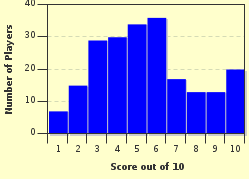Quiz Answer Key and Fun Facts
1. Starting at the shallow end of the pool, in what year was the AK-47 first issued to servicemen in the Soviet Union?
2. The AK-47's first little "brother", known as the AKS, replaced its ungainly buttstock with a folding steel tube, which made the weapon much easier to handle in close quarters. What material was the stock of the AK-47 made of before this modification?
3. In 1959, the Soviet Army was issued a completely new line of AK weaponry, known collectively as AKM. What does the "M" stand for, in both Russian and English?
4. While developing the AKM, Kalashnikov also developed a totally new variant called the RPK. The two models were introduced around the same time, in the late 50s. What purpose does an RPK serve?
5. The AKM family quickly won the respect of weapon designers world-wide. Many countries outside the Soviet Union made clones and variants of the AKM for their own military purposes. The Israelis, borrowing their ideas "third-hand" from a quality Finnish AK variant, made an entire line of AKM rifles adapted for arid conditions. What is the name of the Israeli AK variant?
6. In 1974, Kalashnikov once again produced a series of rifles to replace the aging AKM. This was the AK-74 (no surprises there!). Which of the following is NOT an advantage that the AK-74 has over its predecessor?
7. Of the following weapons, which is NOT a variant of the AK-74?
8. One of the smaller but important differences between the AKM and the AK-74 is the material from which its butt-stock and hand-guards are crafted. While AKM variants had these fittings made of laminated wood, the AK-74 was the first weapon in the world to feature polymer (synthetic material) components that are much lighter and more durable.
9. After the collapse of the Soviet Union, the Kalashnikov weapon manufacturer opted to continue its operations with an emphasis on two main goals: Replacing the aging AK-74 line, and creating AK's suitable for foreign markets. This resulted in a new series of AK's fit for the new millennium, called the AK-100 (or AK-10X) line. Which of the following guns was NOT part of that series?
10. Which of these calibers is NOT used by ANY of the AK-based weapons?
Source: Author
Headrock
This quiz was reviewed by FunTrivia editor
Bruyere before going online.
Any errors found in FunTrivia content are routinely corrected through our feedback system.

